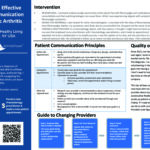PHILADELPHIA—Despite a large and ever-growing number of therapeutic options for our patients with psoriatic disease, it is not uncommon for us come across scenarios in which a patient’s response to therapy does not match our expectations and our shared goals for treatment. We all have those patients—the ones whose joints improve with one drug, but…








